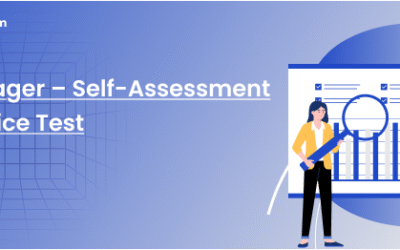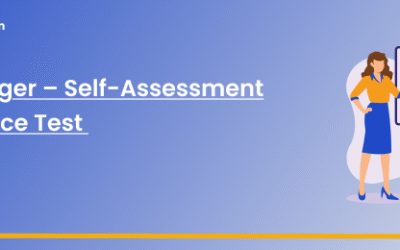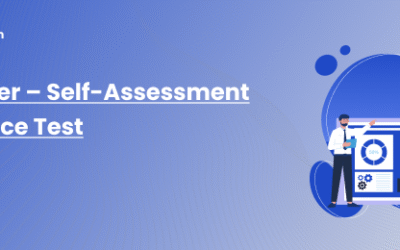What is Stakeholder Management
Stakeholder management is a critical aspect of any business strategy. It involves identifying, analyzing, and engaging with individuals or groups that can directly affect or be affected by a project, decision, or organization. These stakeholders could include customers, employees, investors, government agencies, communities, and more.
Effective stakeholder management is essential for the success and sustainability of a business. By understanding the needs, interests, and expectations of different stakeholders, companies can build relationships, gain support, and mitigate risks. It can also help organizations make informed decisions, promote transparency, and achieve their objectives.
In this article, we will explore the concept of stakeholder management in depth, discussing why it is important, key principles and strategies, and how to implement it successfully. We will also provide practical tips and real-life examples to demonstrate the value and impact of effective stakeholder management.
Whether you are a business owner, manager, or aspiring professional, understanding stakeholder management is crucial for driving growth, building partnerships, and ensuring long-term success. So, let’s dive in and unlock the power of effective stakeholder management.
Importance of Stakeholder Management
The significance of stakeholder management cannot be overstated. In a world where businesses operate in an increasingly complex and interconnected environment, overlooking the influence of stakeholders could lead to unforeseen challenges and missed opportunities. Stakeholder management is about recognizing that every decision a company makes can have a ripple effect, influencing various parties in different ways.
By actively managing relationships with stakeholders, businesses can secure a competitive advantage. They can tap into a wealth of knowledge and perspectives that could refine their strategies and enhance their offerings. Moreover, understanding stakeholders allows for the anticipation of their reactions, enabling companies to proactively address concerns and build consensus around their initiatives.
Furthermore, effective stakeholder management is synonymous with risk management. Stakeholders often have the power to either facilitate or obstruct a company’s plans. By engaging with them, companies can identify potential hurdles early on and work collaboratively to find solutions, thus minimizing the likelihood and impact of risks.
Key Stakeholders in Business
Identifying the key stakeholders in business is the first step towards effective management. As a rule of thumb, any individual or group with an interest in the company’s operations is a stakeholder. This broad definition includes a variety of entities, each with their unique expectations and potential impact.
Customers are typically at the top of the list as they directly consume products or services, influencing profitability and reputation. Employees are equally vital as they are the driving force behind the company’s operations and culture. Investors, suppliers, and business partners are critical for providing the resources and support necessary for the business to thrive.
Additionally, government agencies, regulatory bodies, and the wider community play a role in shaping the operational landscape through laws, regulations, and public opinion. Each of these stakeholders has distinct interests, and it is incumbent upon businesses to understand and address them effectively.
Strategies for Effective Stakeholder Management
Developing strategies for effective stakeholder management is pivotal. It begins with comprehensive stakeholder identification and prioritization. Businesses must map out their stakeholders, assess their level of influence and interest, and determine who requires more attention.
Once stakeholders are identified, companies should engage in open and consistent communication. This includes sharing information about company plans, listening to stakeholder feedback, and demonstrating how stakeholder input is valued and used. Engagement should be tailored to the specific stakeholder group, ensuring that the method and tone of communication are appropriate.
Stakeholder engagement also requires flexibility. Businesses must be ready to adapt their strategies based on stakeholder input and evolving circumstances. This might mean altering project timelines, re-evaluating goals, or even re-thinking the company’s direction to align with stakeholder expectations and ensure mutual benefits.
Benefits of Stakeholder Management
The benefits of stakeholder management are manifold. For starters, it promotes enhanced decision-making. With a thorough understanding of stakeholder perspectives, businesses can make more informed choices that are likely to receive broader support. This can lead to higher levels of stakeholder satisfaction and loyalty, which are invaluable assets in today’s competitive market.
Furthermore, effective stakeholder management can lead to improved project outcomes. When stakeholders are engaged from the outset, they can provide insights that refine project objectives and deliverables, ensuring that the end result is both high-quality and aligned with stakeholder needs.
Additionally, businesses that excel in stakeholder management often enjoy a stronger reputation. They are seen as responsible and responsive entities that value the input of their stakeholders, which can lead to positive public relations and brand enhancement.
Common Challenges in Stakeholder Management
Despite its numerous advantages, stakeholder management is not without its challenges. One of the most common difficulties is managing conflicting stakeholder interests. It is often the case that what benefits one group may not be in the best interest of another, and finding a middle ground can be a delicate balancing act.
Moreover, stakeholder engagement requires significant time and resources. It demands ongoing attention and effort to maintain open channels of communication and to process and act upon the feedback received. For some businesses, particularly smaller ones, this can be a daunting task.
Additionally, there is the challenge of stakeholder identification. In an increasingly complex business environment, it can be difficult to discern all the parties that may be affected by a company’s actions, leading to inadvertent omissions and future complications.
Tools and Techniques for Stakeholder Analysis
Stakeholder analysis is a systematic approach used to identify and understand the needs and expectations of stakeholders. One of the most popular tools for this is the stakeholder matrix, which categorizes stakeholders based on their level of influence and interest. This helps companies prioritize their engagement efforts.
Another useful technique is the stakeholder interview, which involves direct dialogue with stakeholders to gather in-depth insights into their views and concerns. Surveys and questionnaires can also be employed to collect feedback from a larger stakeholder group in a more structured and quantifiable manner.
SWOT analysis (Strengths, Weaknesses, Opportunities, Threats) can be adapted for stakeholder management by focusing on the strengths and weaknesses of stakeholder relationships, as well as the opportunities and threats that stakeholders might present. This comprehensive view aids in developing strategic approaches to engagement.
Best Practices for Stakeholder Communication
Effective communication is the cornerstone of stakeholder management. One best practice is to ensure transparency. Businesses should be open about their objectives, the processes involved, and how stakeholder input will be used. This builds trust and encourages stakeholders to be more forthcoming with their feedback.
It’s also important to tailor communication to the stakeholder’s level of expertise and interest. Technical jargon should be avoided when addressing non-specialist stakeholders, and all communication should be relevant and respectful of the stakeholders’ time and commitment.
Finally, it is critical to listen actively to stakeholders. This means not only hearing but also understanding their concerns, questions, and suggestions. Active listening can lead to stronger relationships and more successful stakeholder engagement.
Case Studies of Successful Stakeholder Management
Real-life examples offer valuable insights into the practical application of stakeholder management. One such case is a leading technology firm that engaged stakeholders in the development of a new software product. By involving customers, developers, and partners in the design process, the company was able to create a product that was well-received and quickly gained market share.
Another example is a multinational corporation that faced public backlash over environmental concerns. By actively engaging with environmental groups and the local community, the company was able to address the issues, implement sustainable practices, and restore its reputation.
These cases demonstrate the tangible benefits of stakeholder management when effectively executed. They show how proactive engagement can lead to improved products, services, and corporate image, ultimately contributing to business success.
Conclusion
In conclusion, stakeholder management plays a pivotal role in the success of modern businesses. It involves a strategic approach to identifying, understanding, and engaging with various groups that have a stake in the company’s operations. When done effectively, it can lead to better decision-making, project outcomes, and a stronger reputation.
However, it is not without its challenges, and companies must be prepared to invest the necessary time and resources to manage their stakeholder relationships effectively. Using the right tools, techniques, and communication strategies can make all the difference in navigating the complex web of stakeholder interests.
Ultimately, stakeholder management is about building partnerships and fostering an environment where every voice is heard and valued. It is a key component of sustainable business practice and an essential element in achieving long-term success.




